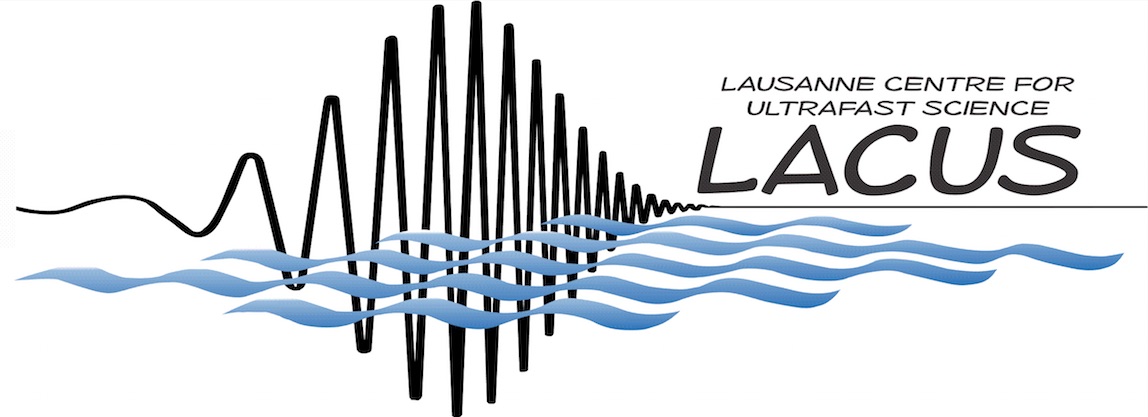
Over the last decade, ultrafast technology has made enormous progress, opening a large variety of new research fields and applications. Examples include frequency combs that revolutionized precision measurements, table-top high-harmonic generation or plasma-based sources that allow new forms of spectroscopy and diffraction, lab-based sources of ultrashort radiation spanning from X-rays to terahertz radiation and electron pulses.
These achievement opened new directions in materials science, chemistry and biology. Fundamental and practical challenges facing our society can be addressed with new methods and thus approached from a new perspective.
The Lausanne centre for ultrafast science (LACUS) was started because most of these challenges can only be addressed by a truly interdisciplinary approach in research and technology, e.g. through the collaboration of specialists in ultrafast science and technology, with experts in physics, chemistry, engineering and life sciences.
EPFL has the largest number of experimental and theoretical research teams in Ultrafast Science and Technology in Switzerland and as such, they form the largest single group within the NCCR:MUST (Molecular Ultrafast Science and Technology). Furthermore, there is an even larger number of labs that use ultrafast technology but do not necessarily investigate ultrafast phenomena. The areas of research of these various groups are very diverse and span fundamental and applied research (see groups for the list of groups, subjects and related publications). This shows a very high degree of complementarity between experts in laser technology and methods and actual or potential users in Engineering and Life Sciences. In addition, several EPFL groups have been pioneers in ultrafast science.
To tackle the ever-increasing demands and complexity posed by ultrafast science experiments addressing important societal challenges and to encourage the collaboration with EPFL research groups in Engineering and Life Sciences and meet their demands, pooling of resources and research infrastructure is needed to allow researchers to go beyond what a single group can afford or manage in terms of equipment, know-how or complexity.
In particular, LACUS will remove the technological burden of developing technology from groups that are primarily interested in the use of these tools to address scientific questions or practical applications. An internationally competitive, sustainable and cost-efficient development of ultrafast science and technology in Lausanne can only be achieved by creating a new, carefully designed and fully dedicated research environment that satisfies the complex requirements of cutting-edge laser technology and helps proliferate ultrafast methods into new areas of science and technology.
Therefore, LACUS will pool in the expertise in the development and the use of advanced ultrafast laser and electron technology and associated methods, along with the EPFL theory groups. Indeed, several world-wide unique set-ups and methods that represent frontier technologies are present on the EPFL campus. LACUS will maintain the EPFL and Switzerland at large, at the forefront of research enabled by ultrafast technology (laser and electron sources). The scientific motivation and tools in this new proposed laser centre are determined by its members across many disciplines in science and engineering, but also by the already existing synergies and new ones that will be fostered. LACUS will make the latest electron and laser technology accessible in the form of a platform to the broader EPFL research community by providing a wide range of experimental parameters (pulse duration, wavelengths, field strengths, repetition rates, etc.), needed to tackle entirely new classes of scientific and practical problems in their full depth.
LACUS will complement and strengthen existing Swiss scientific infrastructures. The quickly evolving field of X-ray free-electron lasers (FEL) calls for the development of new ultrafast laser techniques. LACUS will offer an ideal platform for such developments, as well as an environment for preparing scientific experiments for the precious beamtime at the SwissFEL facility. LACUS will also complement SwissFEL by covering lower photon energies and offering more flexibility in terms of pulse duration, repetition, flux, as well as allowing complementary experiments using ultrashort pulses of electrons.
At the same time, LACUS will facilitate the access of young researchers to an academic career by providing access to expensive equipment and instrumentation that would otherwise be out of reach. Finally, it will foster contacts with industry to ease the transfer of newly emerging ultrafast technology towards applications.
Further information concerning institution-based laser platforms can be found on the dedicated chapter of the Swiss photon science roadmap
